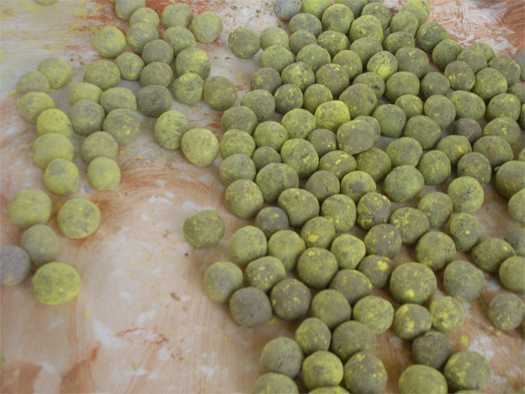
[Prepared Greenaid seedbombs, awaiting dispersal; photograph by Fletcher Studio via Sustainable Cities Collective]
Design Under Sky wrote about this a month or so ago, but given that we’re talking about the Los Angeles River, lo-fi landscape interventions, and that Brett Milligan brought it up again, it’s probably worth taking a moment to mention the Greenaid seedbomb dispensers. Designers Kim Karlsrud and Daniel Phillips (Common Studio) partnered with David Fletcher (author of the chapter of The Infrastructural City that we’ve been discussing this week) to retrofit old gumball machines with a stock of indigenous seed mixes prepared by Fletcher for various urban Los Angeles habitats, letting inclined Angelenos engage in anthropogenic seed dispersal — perhaps, even, as Fletcher’s photomontages suggest, within the concrete confines of the River.
Perhaps somewhat predicatably, though, I wonder if seedbombs prepared for the harsh conditions of the River’s upper reaches should be limited to “indigenous” species? What, after all, does “indigenous” mean in such a thoroughly transformed condition? As Fletcher says in “Flood Control Freakology”:
“…the native versus exotic debate is oversimplified: the landscape assemblages should not be mistake as the cause of environmental degradation, when they are actually an ecologically appropriate result… Many of these infrastructural freakologies serve as green infrastructures, cleansing and processing excess nutrients, controlling erosion, and providing habitat which survives independent of human agency… Moreover, because soil and hydrologic conditions have so radically changed, native vegetation would require careful maintenance to survive.”
What if the seedbombs contained the seeds of the future forests of an infrastructural seaboard?


…so we now have three semi-contradictory narratives on the LA River from Fletcher to deconstruct. Such a shape-shifter; a landscape McIver. I appreciate his multi-pronged approach.